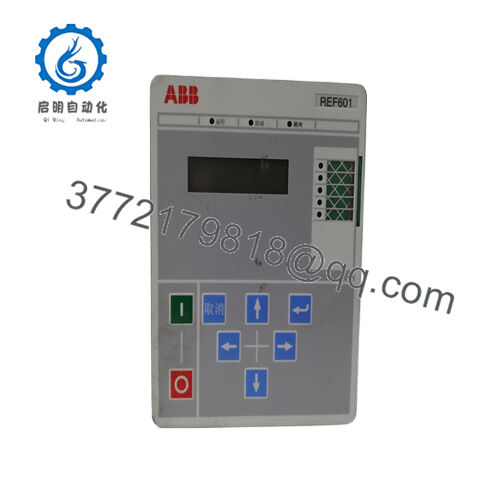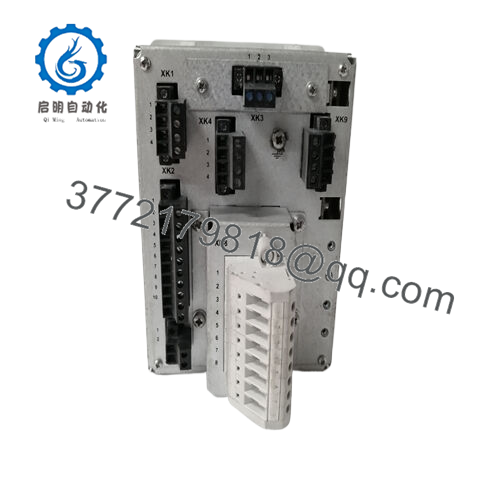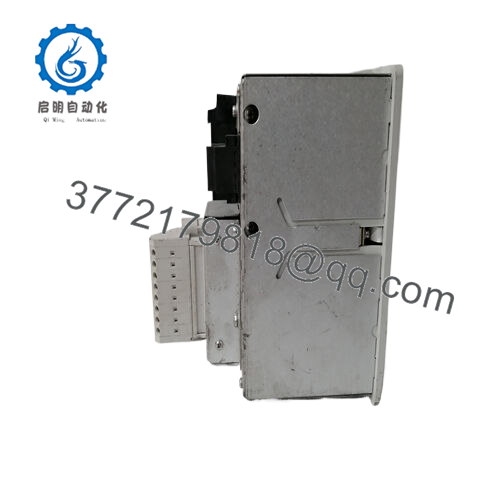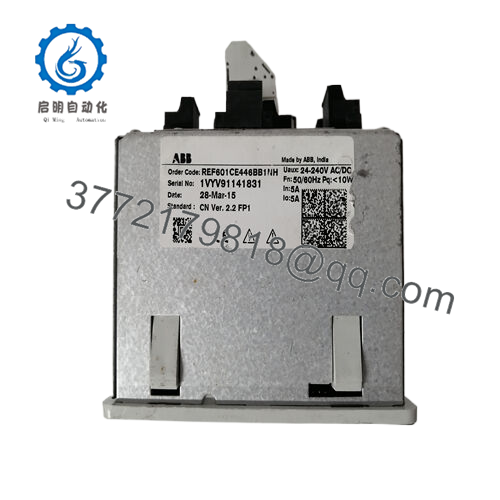Description
Real-World Use & Application Scenarios
In modern power distribution and industrial automation, reliable protection relays are the backbone of safe and efficient operations. Medium-voltage switchgear, distribution substations, and industrial feeder lines all rely on protective devices that can detect faults, isolate failures, and maintain system stability. The ABB REF601 CE446BB1NH is frequently deployed in these demanding environments because it is engineered to handle real-world electrical challenges such as short circuits, overloads, and earth faults.
Industries that operate energy-intensive processes — including oil and gas plants, mining facilities, paper mills, chemical refineries, and steel manufacturing sites — cannot afford unplanned downtime. The ABB REF601 CE446BB1NH plays a central role in ensuring continuity of supply by detecting abnormal conditions and activating protective measures quickly. Utilities also use this relay in secondary distribution networks where operators need compact, reliable, and proven solutions for feeder protection.
In practical terms, the device safeguards motors, transformers, and feeder cables against electrical stress, helping operators meet regulatory requirements and improve asset longevity. It is also suitable for integration into digital control and monitoring systems, giving engineers more visibility into operating conditions. Whether in a compact substation in a city grid or a rugged remote installation in heavy industry, the ABB REF601 CE446BB1NH ensures fault detection and circuit isolation with the precision expected from ABB’s protection relay family.
Product Introduction & Positioning
The ABB REF601 CE446BB1NH is a dedicated feeder protection relay designed as part of ABB’s Relion protection and control product line. It provides protection functions for overhead lines and cable feeders in medium-voltage networks. Built for secondary distribution systems, it combines cost-effectiveness with ABB’s long-standing expertise in protection technology.
Positioned within the REF600 series, this unit is engineered to integrate seamlessly into distribution switchgear and secondary substations. It communicates with supervisory systems, supports critical automation protocols, and allows utilities and industrial users to monitor and control feeders with confidence.
The ABB REF601 CE446BB1NH occupies a key role in the overall control system architecture by acting as the intelligent protective layer between field equipment and supervisory SCADA systems. Its role is not just to trip during a fault but also to provide valuable diagnostic and operational data to operators. For engineers and integrators, this positioning translates into easier coordination, simplified design, and reliable lifecycle support.

ABB REF601 CE446BB1NH

ABB REF601 CE446BB1NH

ABB REF601 CE446BB1NH
Key Technical Features & Functional Benefits
One of the core strengths of the ABB REF601 CE446BB1NH is its fast and selective protection functionality. Designed to respond within milliseconds, it helps minimize the risk of cascading failures in feeder systems. Its algorithms are tuned for accurate detection of overcurrent and earth faults, reducing nuisance tripping while ensuring dependable protection.
Hardware design is another notable benefit. With a compact housing, robust terminals, and user-friendly front panel, the relay is suitable for both new installations and retrofit projects. Its rugged build quality ensures dependable operation even in environments with vibration, dust, or variable temperatures.
Compatibility has been prioritized in its design. The ABB REF601 CE446BB1NH supports industry-standard communication protocols, enabling integration with ABB’s DCS solutions as well as third-party SCADA systems. This interoperability makes it easier for engineers to unify protection devices within diverse networks without extensive custom programming.
Reliability over the long term is a hallmark of ABB relays, and this model is no exception. Energy-efficient internal design, stable thermal performance, and low maintenance requirements extend service life while reducing operational costs. The ABB REF601 CE446BB1NH also includes self-supervision features, ensuring operators are alerted if the device itself requires attention.
Detailed Technical Specifications
| Parameter | Value |
|---|---|
| Model | REF601 CE446BB1NH |
| Brand | ABB |
| Type | Feeder Protection Relay |
| Power Supply | 24–220 V DC / 48–240 V AC (variant dependent) |
| Operating Temperature | –25 °C to +55 °C |
| Mounting | Panel-mounted or flush installation |
| Dimensions | Approx. 130 × 100 × 200 mm |
| Weight | ~2.0 kg |
| Interfaces | RS-485, optional IEC 60870-5-103 / Modbus |
| Certifications | IEC/EN protection relay standards |
| Cooling | Natural convection |
| Environmental Rating | IP54 front, IP20 rear |
Related Modules or Compatible Units
-
ABB REF615 – Advanced feeder protection relay with extended communication and control features.
-
ABB REF620 – Designed for complex feeder applications, providing enhanced fault location and automation functions.
-
ABB REM615 – Motor protection relay that complements feeder protection in the same system.
-
ABB RET615 – Transformer protection unit for integrating with feeder relays in substations.
-
ABB REF601 CE446AA1NH – A closely related variant optimized for specific switchgear configurations.
-
ABB REX521 – Earlier generation relay widely used in industrial distribution networks.
Installation Notes & Maintenance Best Practices
Before installing the ABB REF601 CE446BB1NH, it is important to confirm cabinet clearances, grounding quality, and cable routing to avoid electromagnetic interference. Adequate ventilation and accessibility of terminals should be considered, especially when integrating multiple relays in compact switchgear panels. Engineers should verify that auxiliary supply voltages match the selected relay variant before commissioning.
From a maintenance standpoint, the relay requires periodic inspection of wiring connections, visual checks for dust accumulation, and testing of trip signals during scheduled outages. Diagnostic logs and communication outputs should be reviewed regularly to spot early warning signs of feeder instability. Firmware updates, when released by ABB, should be applied to ensure the device benefits from the latest protection algorithms and cybersecurity improvements. These measures extend the reliable operation of the ABB REF601 CE446BB1NH and reduce the risk of unplanned downtime.


 WhatsApp: +86 16626708626
WhatsApp: +86 16626708626 Email:
Email:  Phone: +86 16626708626
Phone: +86 16626708626


